Discover 8 hidden attractions, cool sights, and unusual things to do in Saint-Josse-ten-Noode (Belgium). Don't miss out on these must-see attractions: Rogier, Cinéma Galeries, and Place de Brouckère. Also, be sure to include Northern Quarter in your itinerary.
Below, you can find the list of the most amazing places you should visit in Saint-Josse-ten-Noode (Bruxelles).
Table of Contents
Rogier

The Place Charles Rogier or Karel Rogierplein, usually shortened to the Place Rogier, or Rogier by locals, is a major square in the Brussels municipality of Saint-Josse-ten-Noode, Belgium. It is named in honour of Charles Rogier, a former Prime Minister of Belgium who played a great political role during the Belgian Revolution of 1830.
The square is located on the transition between Brussels' historic city centre (the Pentagon) and the Northern Quarter business district (also called Little Manhattan), an exponent of modern Brussels. It is an important communication node in the city both in terms of road network and public transport. Many hotels, offices and shops adjoin it. The Rue Neuve/Nieuwstraat, Belgium's second busiest shopping street, also ends there. It is served by the metro and premetro (underground tram) station Rogier on lines 2, 3, 4 and 6.[1]
Cinéma Galeries
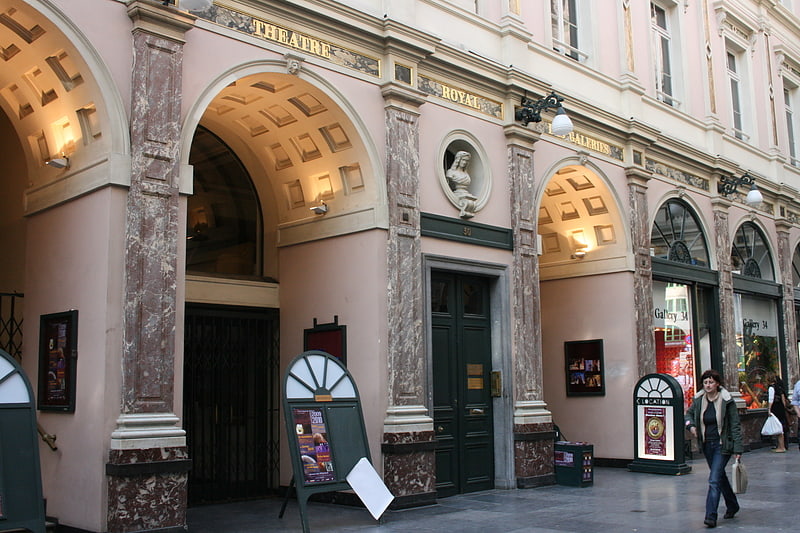
The Théâtre royal des Galeries is a theatre in Brussels subsidized by the French Community of Belgium, located in the Saint-Hubert Royal Galleries. It opened in 1847 and has continuously hosted theatrical activities ever since.[2]
Address: Koninginnengallerij 26, Saint-Josse-ten-Noode (Bruxelles-Ville)
Place de Brouckère
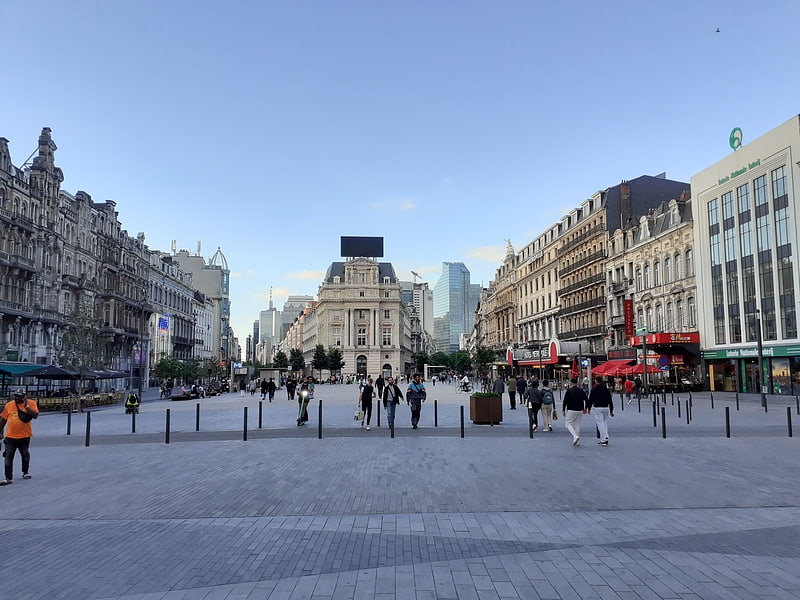
The Place de Brouckère or De Brouckèreplein is a major square in central Brussels, Belgium. It was created following the covering of the river Senne, replacing the Temple of the Augustinians, which was demolished in 1893. It is named in honour of Charles de Brouckère, a former mayor of the City of Brussels and professor at the Free University of Brussels, who played a great political role during the Belgian Revolution of 1830. The square measures approximately 50 by 350 metres and is nearly entirely paved.
The Place de Brouckère is located in the perspective of the Boulevard Émile Jacqmain/Émile Jacqmainlaan and the Boulevard Adolphe Max/Adolphe Maxlaan to the north, forming a "Y" crossroad, and the Boulevard Anspach/Anspachlaan to the south. The area around the square is characterised by the presence of theatres, a large cinema, hotels and restaurants, as well as some of the city's most important entertainment venues and shopping streets. It is served by the metro and premetro (underground tram) station De Brouckère on lines 1, 3, 4 and 5.[3]
Northern Quarter

The Northern Quarter is the central business district of Brussels, Belgium. Like La Défense in Paris, the Docklands in London or the Zuidas in Amsterdam, the Northern Quarter consists of a concentrated collection of high-rise buildings where many Belgian and multinational companies have their headquarters.
The Northern Quarter roughly covers the area between Willebroek Quay, railways along Brussels-North railway station and the northern side of the Small Ring (Brussels' inner ring road). The territory is thus split between the municipalities of Saint-Josse-ten-Noode, Schaerbeek and the City of Brussels.
The area is characterised by high-rise buildings, most around 100 metres (330 ft) tall. Over half of the twenty tallest buildings in Belgium are located in the Northern Quarter. The area has around 1,200,000 m2 (13,000,000 sq ft) of office space occupied by 40,000 workers. It has an additional 8,000 residents.[4]
Boulevard Adolphe Max

The Boulevard Adolphe Max or Adolphe Maxlaan is a central boulevard in Brussels, Belgium. It was created following the covering of the river Senne, and bears the name of a former mayor of the City of Brussels, Adolphe Max.
The Boulevard Adolphe Max is located between the Place de Brouckère/De Brouckèreplein and the Place Charles Rogier/Karel Rogierplein, in the extension of the Boulevard Anspach/Anspachlaan. It runs parallel to Brussels' busiest shopping street, the Rue Neuve/Nieuwstraat. It is served by the metro and premetro (underground tram) stations De Brouckère (on lines 1, 3, 4 and 5) and Rogier (on lines 2, 3, 4 and 6).[5]
Rue de la Loi
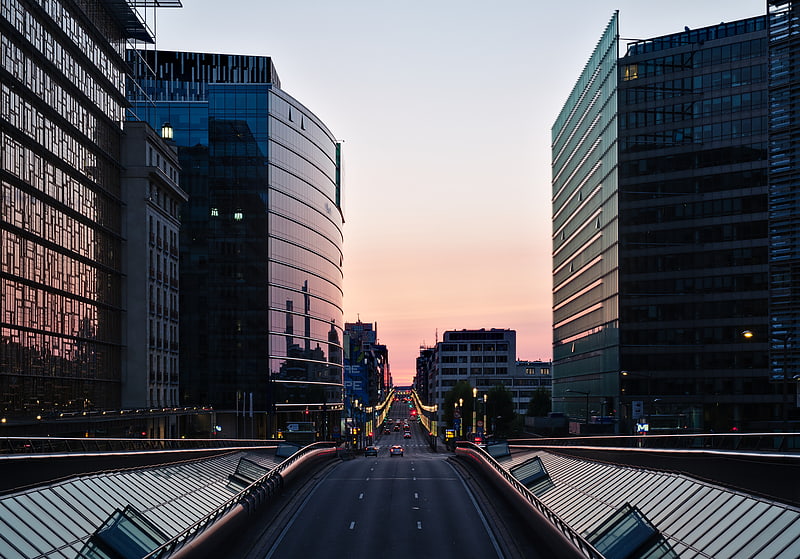
Street in the City of Brussels, Belgium. The Rue de la Loi or Wetstraat, meaning "Law Street", is a major street running through central and eastern Brussels, Belgium, which is famous due to the presence of several notable Belgian and EU governmental buildings. The road runs from the Rue Royale/Koningsstraat, in central Brussels, to the Schuman roundabout in its European Quarter. It forms the first part of the N3 road that runs to Aachen, Germany.
The terms Rue de la Loi in French or Wetstraat in Dutch are used metonymically for government in Belgian politics and media because the Belgian Federal Parliament building (Palace of the Nation) stands at the beginning of this street and the office of the Prime Minister is located adjacent to this building, at number 16. It is also where the Council of Ministers holds its meetings.
At the far end, next to the Schuman roundabout, are the Berlaymont building of the European Commission, the Europa building of the European Council and Council of the European Union, and the Parc du Cinquantenaire/Jubelpark beyond that. Shortly before the roundabout is the exit ramp from the tunnel under the roundabout and Cinquantenaire.[6]
The House of Jacques Louis David
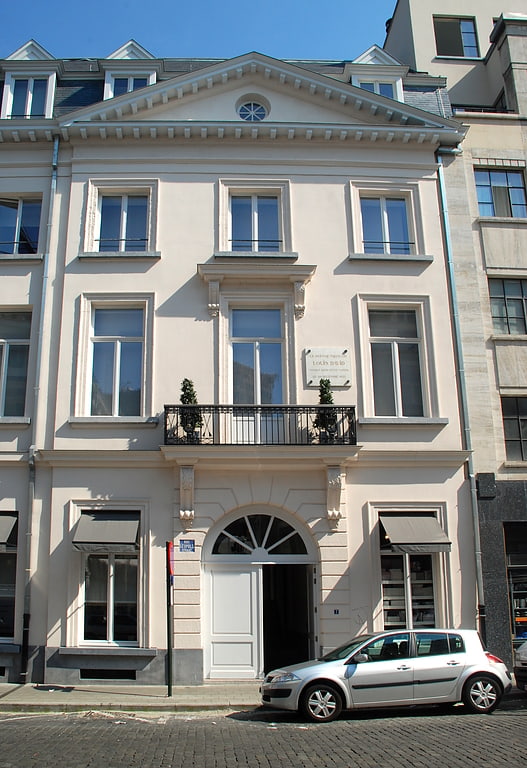
The House of Jacques-Louis David is a neoclassical building located at number 7 rue Léopold, Brussels, where the painter died on the 29th of December, 1825.[7]
Schuman tunnel
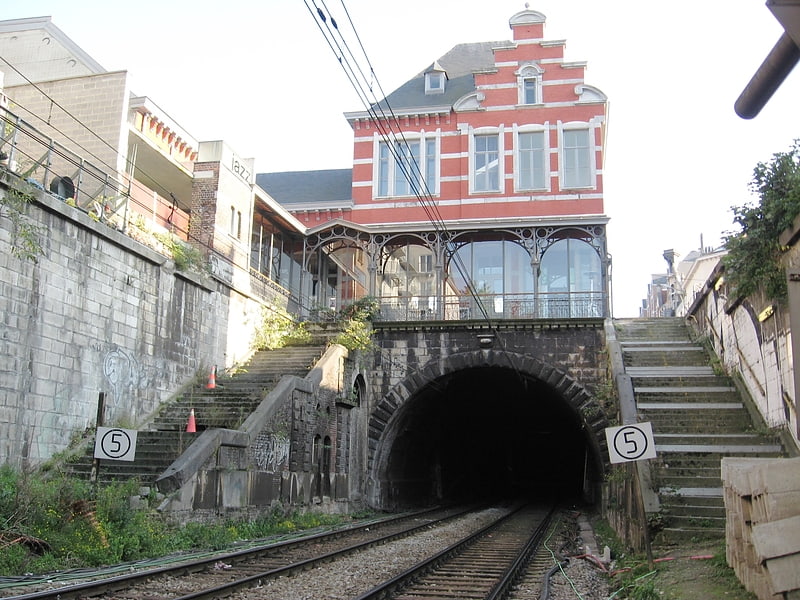
The Schuman tunnel is a 970m long rail tunnel in Brussels. It passes beneath avenue Clovis, square Ambiorix and the boulevard Charlemagne. The line running through it is the double track line 161. The speed limit in the tunnel is 50 km/h.
The northern portal is under the Chaussée de Louvain station in Saint-Josse-ten-Noode. The southern end contains the Brussels-Schuman station. The tunnel passes around the back of the Berlaymont building. Travelling northwards, the Schuman tunnel is followed by the Deschanel tunnel then the Josaphat tunnel.
The tunnel takes its name from the politician Robert Schuman[8]